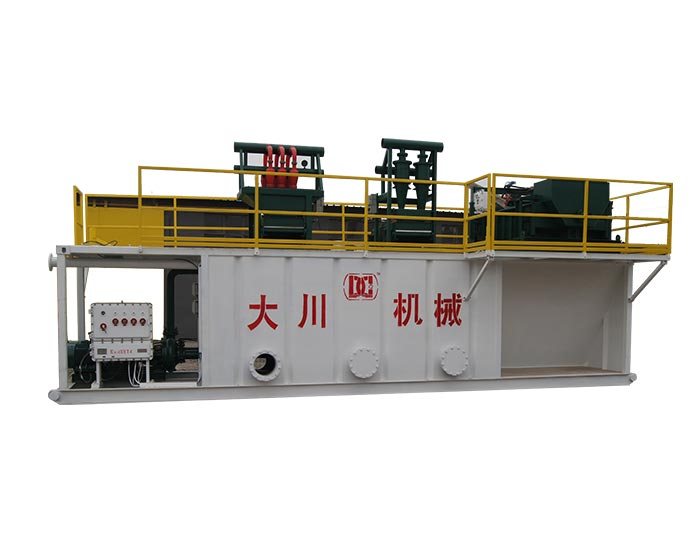Mud Tanks The Unsung Heroes of Drilling Operations
In the world of drilling operations, particularly in the oil and gas industry, the equipment we use plays a crucial role in determining the efficiency and safety of the entire process. Among these essential components, mud tanks stand out as unsung heroes. Serving as the storage and circulation systems for drilling fluid, mud tanks are vital for controlling the drilling operation and ensuring that the drilling rig operates efficiently. This article will explore the materials used in constructing mud tanks, highlighting their significance and importance in maintaining the effectiveness of drilling activities.
Mud Tanks The Unsung Heroes of Drilling Operations
Steel is the most widely used material for mud tanks due to its inherent strength and ability to withstand high pressure. Structural steel, often treated to resist corrosion, provides the necessary durability required for supporting significant operational loads. In addition, steel is relatively easy to fabricate and repair, making it a practical choice for the rigors of the drilling environment. Coatings such as galvanization or paint are typically applied to enhance its corrosion resistance, ensuring the longevity of the mud tank even in harsh conditions.
mud tanks material
Epoxy-coated surfaces are another popular choice for mud tanks. Epoxy coatings provide a robust layer of protection against chemical corrosion, which is particularly important given the composition of drilling fluids, which can contain a range of potentially corrosive additives. The smooth surface created by the epoxy coating not only aids in preventing corrosion but also facilitates easier cleaning and maintenance. This is crucial as maintaining clean tanks helps in minimizing contamination in drilling fluids, thus enhancing the overall efficiency of the drilling operation.
Fiberglass is another material gaining traction in the construction of mud tanks, especially in environments where weight is a critical factor. Known for its lightweight properties, fiberglass offers excellent corrosion resistance and is less susceptible to damage from harsh chemicals compared to traditional materials. While fiberglass tanks can be more expensive to produce, their longevity and minimal maintenance requirements often make them a cost-effective choice in the long run.
The design and functionality of mud tanks go hand in hand with the materials used. Typically, mud tanks are designed in multiple compartments to facilitate the separation of different types of drilling fluids and sediments. The choice of material also plays a significant role in determining how well these tanks can perform under pressure. Whether it’s the robust structure of steel, the protective qualities of epoxy, or the lightweight utility of fiberglass, each material serves its purpose, enabling the mud tank to regulate and store drilling fluids effectively.
In conclusion, mud tanks are a critical component of drilling operations, providing the necessary systems for storing and managing drilling fluids. The materials used in constructing these tanks—steel, epoxy coatings, and fiberglass—offer unique advantages that contribute to the efficiency and safety of the drilling process. As the demands of the oil and gas industry continue to evolve, so too will the materials and technologies associated with mud tank design, ensuring that these unsung heroes remain effective in supporting drilling operations for years to come. Understanding the significance of mud tanks and the materials used in their construction is fundamental for industry professionals striving for excellence in drilling operations.
 Linear Motion Shale Shaker In Drilling Rig
Linear Motion Shale Shaker In Drilling Rig  Oilfield Mud Cleaner
Oilfield Mud Cleaner  Drilling Fluid Decanter Centrifuge
Drilling Fluid Decanter Centrifuge  Drilling Mud Desander
Drilling Mud Desander  Hydrocyclone Desilter
Hydrocyclone Desilter  Centrifugal Pump/Centrifugal Mud Pump
Centrifugal Pump/Centrifugal Mud Pump  Shear Pump
Shear Pump  Jet Mud Mixer
Jet Mud Mixer  Horizontal Mud Agitator
Horizontal Mud Agitator  Constant Pressure Drilling Fluid Mud Gas Separator
Constant Pressure Drilling Fluid Mud Gas Separator  Mud Gun
Mud Gun  Mud Tank
Mud Tank  Solids Control System Vacuum Degasser
Solids Control System Vacuum Degasser  Flare Ignition Device
Flare Ignition Device  Diesel Tank
Diesel Tank  Submersible Slurry Pump
Submersible Slurry Pump 






































